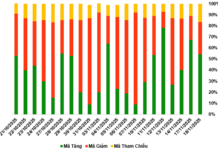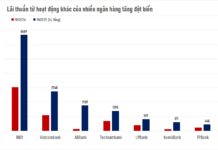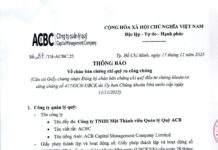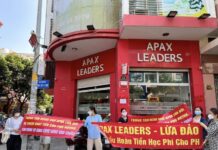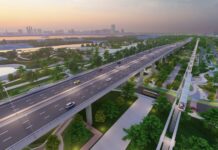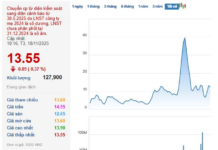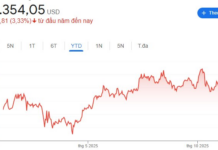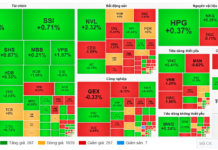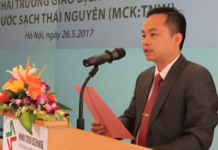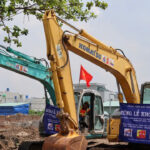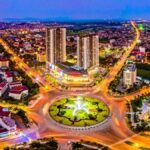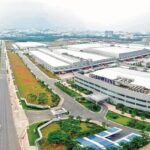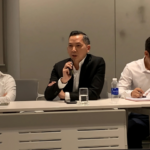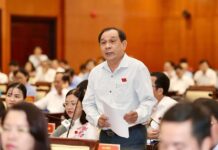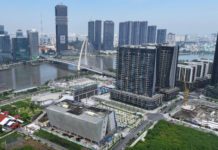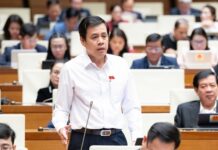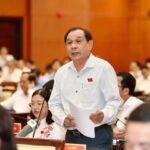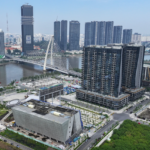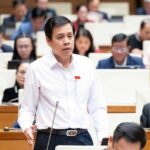2020-2025 Term: Breakthroughs in Infrastructure and Administrative Reform
According to the political report presented at the 1st Congress of the Gia Lai Provincial Party Committee for the 2025-2030 term, the 2020-2025 period marked a significant transformation in Gia Lai’s economic development. This was achieved through the synchronized implementation of various mechanisms and policies aimed at encouraging diverse business types, particularly in the private sector and foreign-invested enterprises.
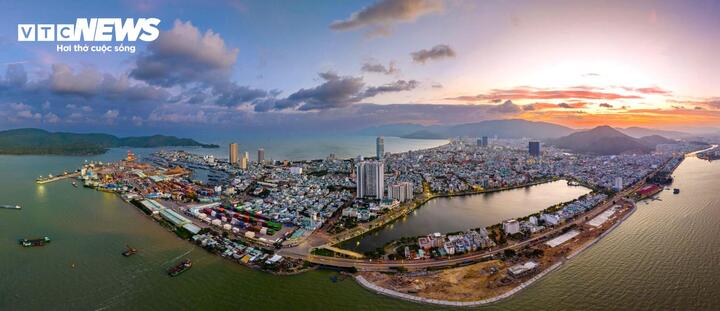
Gia Lai has made remarkable strides in economic development.
During the 2020-2025 period, the province attracted 778 domestic investment projects, with a total registered capital exceeding 285.2 trillion VND.
All economic sectors in the province continued to grow. State-owned enterprises were equitized as planned and operated efficiently. The private sector and household businesses saw substantial growth, while the quality of cooperative economies improved, with many cooperatives achieving effective production and business operations. Between 2020 and 2025, over 13,700 new enterprises were established, with a total registered capital of more than 123.3 trillion VND.
Efforts to attract and promote foreign-invested economic sectors yielded positive results. The province currently hosts 107 FDI projects, with a total registered capital of over 2.3 billion USD. Notably, during the 2020-2025 period, 38 FDI projects were secured, with a total capital of 1.75 billion USD.
Over the past five years, Gia Lai’s total social investment capital grew significantly, accounting for 38.1% of GRDP. Key infrastructure projects were completed, including national highways, coastal roads, the North-South Eastern Expressway, industrial zones, and upgraded irrigation systems and reservoirs. These developments have created new momentum for comprehensive growth.
Administrative reforms were also accelerated, with the application of information technology to streamline online administrative procedures, reducing both time and costs for businesses. This has been a major factor in enhancing Gia Lai’s appeal to investors.
The trade and service sector achieved an average annual growth rate of 6.92%, contributing 38.5% to GRDP. The total retail sales and service revenue from 2021 to 2025 is estimated at over 741 trillion VND, with export turnover reaching 12 billion USD.
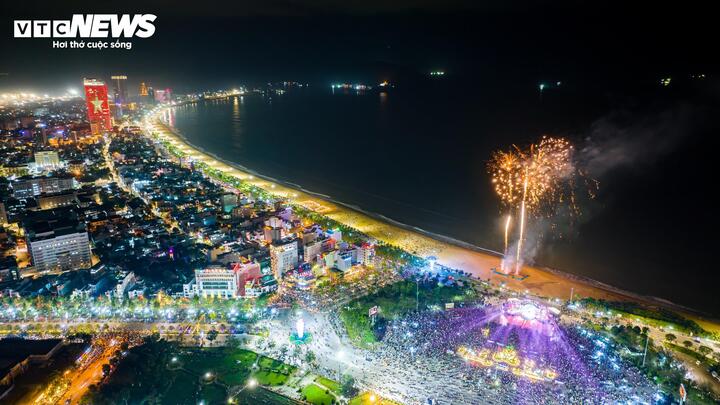
Tourism is emerging as a new key economic sector in Gia Lai.
Notably, tourism is becoming a new economic pillar. By the end of 2025, Gia Lai is expected to welcome 12.4 million tourists, generating revenue of over 27 trillion VND. With its majestic natural landscapes and unique indigenous culture, Gia Lai is emerging as an attractive destination, both domestically and internationally.
The report highlights that Gia Lai has not only focused on attracting investment but also on ensuring project quality and sustainable development. FDI projects are increasingly diverse, concentrating on renewable energy, high-tech agriculture, and deep processing. The province has also launched several major science and technology initiatives, supporting innovative startups and fostering a comprehensive digital transformation ecosystem.
2025-2030 Term: Aspiring to Reach New Heights
Entering the 2025-2030 term, the 1st Congress of the Gia Lai Provincial Party Committee has set a general goal: “Building a clean and strong Party organization and political system; upholding cultural traditions and national unity; maintaining defense and security; promoting science, technology, innovation, and digital transformation; and mobilizing all resources to make Gia Lai a well-developed province in the country.”
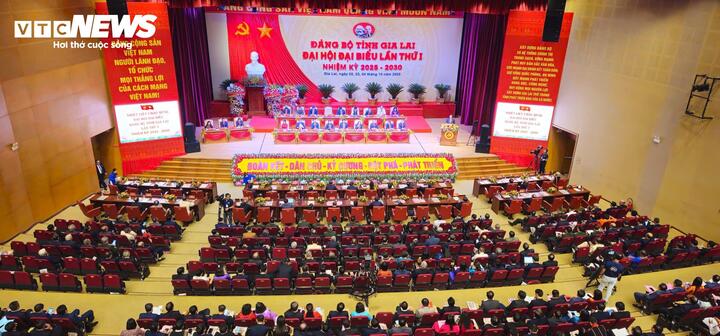
The official session of the 1st Congress of the Gia Lai Provincial Party Committee for the 2025-2030 term.
The GRDP growth rate for the 2025-2030 period is targeted at 10% – 10.5% annually. By 2030, the per capita GRDP is expected to reach 6,300 – 6,500 USD. The digital economy is projected to contribute 25% – 30% to the province’s GRDP. The province aims to welcome 18.5 million tourists by 2030, including 1.1 million international visitors.
The Congress’s theme underscores this determination: “Building a clean and strong Party organization and political system; … mobilizing all resources to make Gia Lai a well-developed province in the country.”
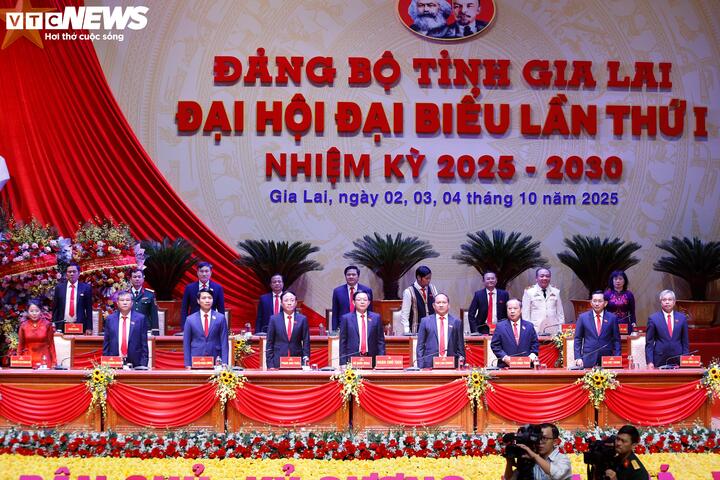
The Presidium of the 1st Congress of the Gia Lai Provincial Party Committee for the 2025-2030 term.
To achieve these goals, the Political Report presented at the Congress identifies five growth pillars and four strategic breakthroughs.
The five growth pillars include: Processing and manufacturing industries, renewable energy and green industries, particularly semiconductors and artificial intelligence (AI); Tourism as a key economic sector, leveraging coastal, forest ecology, and unique cultural heritage; High-tech agriculture and sustainable forestry, developing large specialized zones and value chains for key products; Port and logistics services along strategic economic corridors; Rapid and sustainable urban development linked to a diverse real estate market.
The four strategic breakthroughs focus on: Significantly improving the investment environment and institutionalizing policies; Advancing science, technology, innovation, and digital transformation; Developing a high-quality workforce; Breakthroughs in investing in transportation, industrial, and digital infrastructure.
With these decisive steps, Gia Lai is proving that from a sun-drenched highland region, it can rise to become a “new star” on Vietnam’s investment map.
Exciting News for Hanoi, Ho Chi Minh City, Quang Ninh, Hai Phong, and Hue
Here are five pioneering locales that have taken groundbreaking strides in economic and social development, leveraging science, technology, and innovation as their cornerstone.
Deputy CEO of VinaCapital: “Industrial Real Estate Should Be Recognized as a National Asset”
“Industrial real estate should be considered a national asset, not merely a business venture,” stated Mr. Trần Thanh Thanh Hải, Deputy General Director in charge of energy and infrastructure at VinaCapital, during the Committee II’s public-private partnership discussion session on the morning of September 29th.

